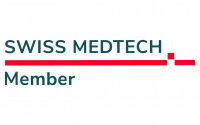BLOG
Telecom26 blog
How IoT Can Help The Global Supply Chain To Keep Moving

Whilst writing our recent blog - Supply Chains, IoT Connectivity and our Global Roaming Service - our IoT Connectivity experts found an interesting piece on The World Economic Forum’s website 5 ways the COVID-19 pandemic has changed the supply chain which reports that:
“The worldwide supply chain continues to be affected by challenges relating to the COVID-19 pandemic, including delays and disruption.
Many chief executives now identify supply chain turmoil as the greatest threat to their companies' growth and their countries' economies - greater than the pandemic, labour shortages, geopolitical instability, war and domestic conflict.
Organizations need to reimagine and manage their supply chain differently to ensure business continuity and growth for the future”.
The piece says that global manufacturer Clorox is “one of many companies taking action…by… investing $500 million in upgrading its digital capabilities, citing the need for real-time visibility and better demand planning”.
COVID showed us how our world is entirely dependent on lengthy supply chains. Even if goods are manufactured or produced locally – and sold locally, for the vast majority of things we consume, freight transport is essential. These complex webs continue to evolve – just look at plans for new, pan-European transport corridors, spanning road, rail and inland waterways, or tentative steps to unlock new ocean routes to avoid bottlenecks and reduce the length of voyages.
Supply Chains, IoT Connectivity and our Global Roaming Service
Since the safe and timely delivery of materials across all transport routes - on-land, on-sea and in the air- is paramount for everyday life, freight companies are increasingly seeking to use IoT data to optimise performance, while manufacturers and others in the supply chain want to collect information about goods while in transit.
There’s nothing inherently new in this – data has always provided insights that can help all stakeholders. But, there’s a growing recognition that new IoT data can be key to unlocking a host of future benefits from increasingly complex applications - from optimised supply chains to the condition of goods – all the way to full digital twins of container vessels and trains, and blockchain-enabled customs clearance.
One way or another, it’s fair to say that data is essential to the development of the global supply and logistics industry. That data needs to be collected and distributed, so that it can be processed. So, in this context, it’s worth thinking about some key factors as you seek to optimise IoT data collection and transfer, across your freight journey.
Data sensors are everywhere but not all data is the same - and neither are IoT networks
Whether freight moves by ship, rail or lorry, sensors will be involved. These sensors will move, across borders and through customs checkpoints. Vessels, vehicles and other forms of transport are already equipped with sensors that track position, collect data from on-board processes and more. They will also be embedded in containers, or attached to individual packages. So, we have data from the transporters and data from the goods transported to consider. As a result, it’s important to remember that the data they collect has different characteristics:
- A significant proportion of this data is low volume – low packet size – and requires little bandwidth
- A growing proportion, however, will have much great bandwidth requirements, for example for key operational systems and reporting
- Again, not all data has the same time sensitivity. Some requires real-time transfer, while other data can be transmitted periodically, or when conditions change according to alarm triggers
- IoT connectivity needs to be arranged to reflect this, with prioritisation of critical data and secure gating to send less critical data at the right intervals
Data is different and your IoT solutions and connectivity need to respect this. And, as you introduce more sophisticated remote processes, automated operations and more, it will need to evolve.
Data is bidirectional – but not synchronous
Data collected from vessels, containers and other resources has to be transmitted so that it can be processed, somewhere. At the same time, data may need to be sent back to these sensors, so that settings can be adjusted, actions taken and so on. The data sent in both directions is not equal, so connectivity doesn’t need to be either. A difference between up- and down-link speeds is fine, so long as the right transfer rates can be obtained, when required – or transmission controlled according to the data paths available.
Data will become active, not passive
Many organisations are integrating automation, backed by artificial intelligence and machine learning into their processes. This will yield obvious benefits for operations, on board vessels, for example, but it will also feed into stock management, ordering and active interventions in how goods are handled in transit. IoT data is crucial to this and, while reporting remains a key focus, data will also provide a source of fuel to drive the optimisation of processes and to train algorithms.
In addition, data will become part of customs and import / export systems – so data will need to be shared at the right time, with the right agencies and with the right levels of protection. Data will be a currency as well as an internal resource.
Mobile networks are essential for IoT – but do you get the connectivity your applications require?
All this IoT data, of different classes and with different priorities needs to be transferred to and from freight Transport needs wireless connectivity. This means using SIMs or eSIMs, that are inserted or embedded into devices and sensors from which you want to collect data.
Mobile networks have different capabilities too – apart from the speeds they offer, based on whether they are 2G, 3G, 4G or 5G. There are also private Access Point Names, which basically are the entry points to the network for the transfer of your IoT data. You can use the public APNs, but there may be a benefit in using a private one, so that you can ensure that your data is isolated.
There are other considerations too – so, the bottom line is that you need make sure that your network providers can meet any requirements from your IT teams.
Freight routes span multiple networks
The freight journey – on land, sea or air – can be seen as a series of hops, during which different networks can be available. There may be continuous coverage, so these networks need to be seen as assets to be leveraged, whenever data transfer is possible or required. Being able to access all the networks, along a journey is essential.
That’s obviously true for land-based freight, but it’s also true at sea. That’s because, even though some vessels do undertake long, cross-ocean voyages, a significant duration of most of these is close to shore. Similarly, air transport may involve several jumps, allowing connectivity at each point. In other words, land-based mobile networks are available for much more of the journey or voyage than many may think.
As such, mobile networks are key to the successful flow of IoT data and are integral to any data programme. So, you’ll need the ability to connect to any available network, when in range – and to ensure that you can get any additional services you need.
You can read more about Telecom26’s maritime service here.
Telecom26 – connectivity across your entire global supply chain
We offer a single, global solution that spans the full distance of your supply chains, across sea, land or air with seamless coverage over 650 mobile operators in more than 200 countries - and ability to customise connectivity according to the budgets.
So, if you are thinking about optimising supply, transport and logistics chains, you need a partner that understands both the tech and the geography, so you can get connected, end-to-end.
If you’d like to discuss how our IoT communications services can support your supply chain and logistical requirements across the world, then please get in touch.
For more information about how IoT is helping improve efficiencies throughout the supply chain please visit our white papers “The communications voyage – seamless connectivity and coverage” and “Managing and tracking deliveries, end-to-end supply chain IoT Use Cases”
Catching-Up In-Person
Telecom26’s IoT and maritime connectivity experts will be attending a couple of shows this year:
Nor-Shipping in Oslow, Norway from 4-7 April



